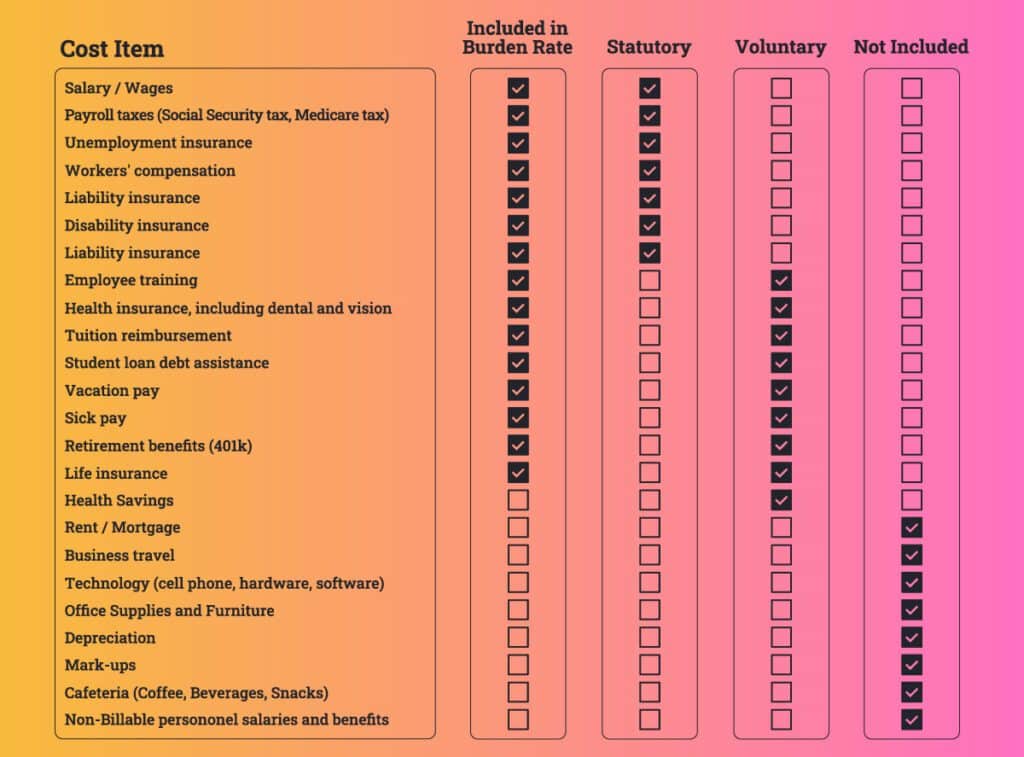Best Practices for Calculating Costs and Maximizing Project Margins

Do you know the real cost of your services? Digital agency leaders naturally focus on the “big picture” metrics, tracking overall profits, revenues, and expenses. But there’s inherent value in diving deeper to understand and align on other important metrics, such as the cost of services and project margins, as both provide a better sense for how individual projects can and should perform and, ultimately, help to inform leaders on how to maximize profitability for the business.
Unfortunately, when trying to understand the ins and outs of calculating these metrics, it’s easy to get lost. There simply hasn’t been a clear answer for how to approach these calculations (because they’re complicated), and everyone has a different opinion and method for measuring them (which makes this even more confusing).
But you’re in luck! The team here at Parallax has worked with industry experts across both services operations and finance operations to nail down an approach for measuring the cost of services and driving behaviors that result in healthy project margins. Our approach is tested. It’s tried-and-true—and it’s outlined below. 👇
Table of Contents
- Measuring the Cost of Services
- How to Achieve Healthy Project Margins
- How to Calculate Cost Rate
- Dive Deeper with Parallax
Measuring the Cost of Services
For digital agencies and other services companies, the cost of services (or cost of goods sold or cost of revenues) refers to any direct costs related to earning revenues. This includes salaries and expenses for billable employees working on client projects, such as payroll taxes, vacation accruals, health benefits, and any fringe benefits. It also includes any other costs directly related to producing or servicing the revenue, such as unreimbursed travel expenses or software that was purchased for that specific project.
For example, if a team member is working on a project and has to travel, you wouldn’t increase their hourly cost rather add the travel cost to the project. That said, if the travel is reimbursed by the customer, you would not include it.
Importantly, we recommend focusing only on direct costs related to earning revenues and avoiding including overhead costs in the calculation, such as rent or non-billable employees.
You might be wondering what to do about the people who split their time between billable work and administrative or other company-related work. Labor expenses like payroll for people who do billable work should be included in the cost of services, even if they only bill for a fraction of their time.
It’s worth repeating: we suggest not splitting billable time and putting those billable people in the cost of services instead. For instance, if a practice leader is expected to bill only 25%, their expenses should still be included in the cost of services.
Calculating project profit, then, involves subtracting the cost of services from total revenues, whereas project margin is the ratio associated with it: profit/revenue. This provides a clearer picture of the profitability of specific projects without including overhead.
What about sales and marketing expenses, which include a commission for salespeople? These expenses, as well as research, administrative, and other line items, are separate. Again, it’s generally best to include only expenses that are directly related to the project rather than including other expenses like sales and marketing so that you can calculate a more accurate gross profit and get a better, deeper understanding of your financial performance per project.
This approach for calculating the cost of services and project margin helps you understand what’s “above the line” (cost of services) vs. “below the line” (operating expenses, taxes, interest) and how profitable your services are outside of what it takes you to sell it and to work it.
In even simpler terms, this approach helps get to the center of how to measure actual performance based on things your delivery team can control, including the number of hours worked on a project, travel expenses, and other direct expenses related to the project, rather than things that cannot be controlled, such as commission plans or how a sale was made.
By focusing on what can be controlled, you can more easily determine if you are delivering efficiently and if you have the right team for the project. 💯
How to Achieve Healthy Project Margins
Now, you might be asking how you should go about achieving healthy project margins. What kind of habits and behaviors does your delivery team need to adopt?
We highly recommend establishing burdened cost rates. This takes into account all the “above the line” expenses (salaries, benefits, and specific expenses for billable employees) when you’re calculating gross margin and then breaks those costs down into hourly rates by role.
When you set cost rates at the role level (more on this below!), it allows project managers to understand the impact of using different levels of expertise, such as senior engineers versus a mix of senior and junior engineers. It’s also important to set cost rates for outside contractors (or rates at the “individual” level) as they may be higher than internal cost rates even when fully loaded.
In Parallax, you can establish an average target margin for projects by setting cost rates in the Settings view under Roles. For employees, the default cost rate will be based on their role, but you can override it for contractors with custom rates. This customization capability also allows you to set a target margin for projects, which can be overridden on a project level but defaults to the company-wide target.

The basic idea is that when you set cost rates at the role level, project margins will be directionally correct. You’ll understand how to sell projects within your margin and who should be on those projects based on rate, and then project managers can track progress towards the target margin. If the train is going off the tracks, project managers and leaders (as needed) can regroup and make a plan of action to course correct. We dive into detailed best practices for tracking project margins here.
Keep in mind when calculating these metrics that precision is not always necessary (in fact, it’s the enemy of accuracy in this case). The goal is simply to drive behaviors in the right direction.
How to Calculate Cost Rate
Now, how do you calculate the cost rate? We have a recommendation for that, too. We recommend using the burdened cost for each employee (or the average burdened cost by role) related to the total number of hours available to bill each year when calculating the cost rate.
- Burdened Cost: Burdened cost rate should include the direct costs of maintaining an employee, including gross compensation (salary, bonuses, etc.), employment taxes, healthcare benefits, pension contributions, and any other hidden costs. The difference between burdened cost and the fully burdened cost is that the fully burdened cost includes an allocation for corporate SG&A costs. Our recommendation is that you use burdened cost, not fully burdened when calculating the cost rate.
- Total Hours Available: The total hours available is a function of the number of hours relative to the organizational standard working days. For example, it would be every weekday (260 days) less the number of PTO days (vacation and holidays) multiplied by the number of working hours expected each day.
260 – (11 holidays + 10 PTO days)* 8 hours = 1912 hours available
- Cost Rate (Burdened Cost Per Available Hour): Cost rate can then be determined by either the individual or role based on the burdened annual salary and related expenses (the burdened cost) for the employee divided by the total number of hours available in the year.
If tracking project costs and related contribution margin is a new concept to your organization, consider starting with roles and segmenting by role level or seniority to get a feel how it works. When you get comfortable working to project margin, then you can start layering in rates for the individual—just keep in mind that maintaining this level of granularity will add extra work to your process.
Dive Deeper with Parallax
We don’t deny it: calculating the cost of services and project margins can feel overly complex. There will be lots of differing opinions on what to include and what not to include—and when to track these metrics and how to track them. If you’re feeling overwhelmed, know you’re not alone.
Our promise to you is that we’re here to help make this aaaall a little easier to navigate. The Parallax team is full of experts ready and willing to dive into the details—so if you’re feeling scrambled and confused about what these metrics mean and how and why you should be tracking them, let’s connect.
We’re always happy to share guidance based on the success we’ve seen from our customers and the best practices we deploy ourselves. 🤝


